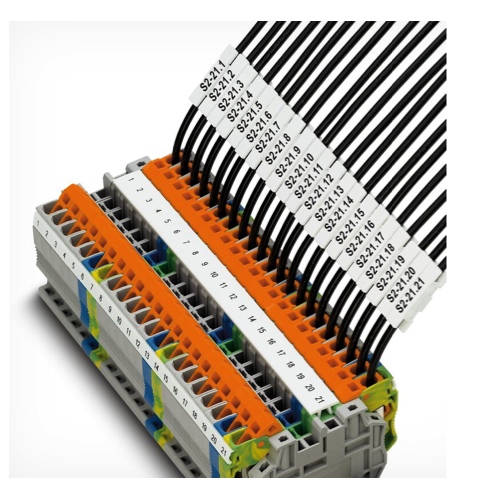Wire Labels

Identifying and organizing wires and cables are crucial to ensuring safety and efficiency in electrical, industrial, and network applications. Wire labels are necessary to mark wires and prevent confusion; they are especially useful when troubleshooting or performing maintenance on a given system. The way that you choose to label your wires may depend on the specific workspace where they are located, the appearance that you want your installation to have, or the environment that the wires are passing through. Fortunately, there are various materials and methods available for wire labeling, and a label can mark a wire just as well as the best of any identification system.
To achieve optimal durability, wire labels need to resist heat, moisture, and chemicals, they need to be readable in a range of different environments. Some labels are even flexible, allowing them to wrap around a cable or to be used as a quick identification tag. Work sites where cord and wire arrangement seems to be a recipe for disaster are made safer by the clear, unambiguous labeling of those cords and wires, reducing the risk of harmful mistakes made with electric or communication lines. In indoor and outdoor home and office arrangements, as well as at large-scale industrial sites, top-quality wire labeling helps ensure safer, more effective operations.
More Information about Wire Labels
Users looking for a flexible and tough labeling solution with a clear, easy-to-read printable area will find self-laminating wire labels to be just the thing. These labels safeguard the printed information beneath them with a laminate cover—protection that extends the life of the label in all sorts of demanding conditions. And of course, you can use them as for identifying wires in complex electrical systems. You can print anything from your inventory codes to standard safety warnings right on the label.
FAQs
Can heat shrink tubing be used as cable labels and cable markers in outdoor applications?
Yes, heat shrink tubing can be used as cable labels and cable markers in outdoor applications because it provides a durable, moisture-resistant, and abrasion-resistant solution that securely adheres to cables even in harsh environments.
Labeling an Industrial Control Panel Tips and Tricks
Wire Labeling:
Establish a method and stick to it.
Good practice to show where the wiring is coming from and where it is going
Don't put too much information on the label as it can become confusing and difficult to read
Size the labels properly and don't heat shrink until testing has been completed.
Hardware Labeling:
Clearly label all hardware and make sure it makes sense to end user
Good practice to make sure all IP addresses are on all radios, PLCs and network equipment
Make sure to list any voltage or amperage considerations for hardware if necessary
UL Labeling:
Must have a main panel ID
This label should include input voltage, short circuit rating, FLA and fuse legend
Wire labels should match the drawing provided

